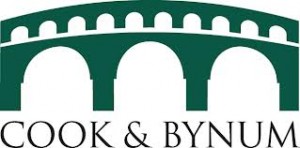The fund: |
RiverPark/Wedgewood (RWGFX) |
|
Manager: |
David Rolfe, manager since inception. | |
The call: |
I had a chance to speak with David Rolfe of Wedgewood Partners and Morty Schaja, president of RiverPark Funds. A couple dozen listeners joined us, though most remained shy and quiet. Morty opened the call by noting the distinctiveness of RWGFX’s performance profile: even given a couple quarters of low relative returns, it substantially leads its peers since inception. Most folks would expect a very concentrated fund to lead in up markets. It does, beating peers by about 10%. Few would expect it to lead in down markets, but it does: it’s about 15% better in down markets than are its peers. Mr. Schaja is invested in the fund and planned on adding to his holdings in the week following the call. The strategy: Rolfe invests in 20 or so high-quality, high-growth firms. He has another 15-20 on his watchlist, a combination of great mid-caps that are a bit too small to invest in and great large caps a bit too pricey to invest in. It’s a fairly low turnover strategy and his predilection is to let his winners run. He’s deeply skeptical of the condition of the market as a whole – he sees badly stretched valuations and a sort of mania for high-dividend stocks – but he neither invests in the market as a whole nor are his investment decisions driven by the state of the market. He’s sensitive to the state of individual stocks in the portfolio; he’s sold down four or five holdings in the last several months nut has only added four or five in the past two years. Rather than putting the proceeds of the sales into cash, he’s sort of rebalancing the portfolio by adding to the best-valued stocks he already owns.” His argument for Apple: For what interest it holds, that’s Apple. He argues that analysts are assigning irrationally low values to Apple, somewhere between those appropriate to a firm that will never see real topline growth again and one that which see a permanent decline in its sales. He argues that Apple has been able to construct a customer ecosystem that makes it likely that the purchase of one iProduct to lead to the purchase of others. Once you’ve got an iPod, you get an iTunes account and an iTunes library which makes it unlikely that you’ll switch to another brand of mp3 player and which increases the chance that you’ll pick up an iPhone or iPad which seamlessly integrates the experiences you’ve already built up. As of the call, Apple was selling at $400. Their sum-of-the-parts valuation is somewhere in the $600-650 range. On the question of expenses: Finally, the strategy capacity is north of $10 billion and he’s currently managing about $4 billion in this strategy (between the fund and private accounts). With a 20 stock portfolio, that implies a $500 million in each stock when he’s at full capacity. The expense ratio is 1.25% and is not likely to decrease much, according to Mr. Schaja. He says that the fund’s operations were subsidized until about six months ago and are just in the black now. He suggested that there might be 20 or so basis points of flexible room in the expenses. I’m not sure where to come down on the expense issue. No other managed, concentrated retail fund is substantially cheaper – Baron Partners and Edgewood Growth are 15-20 basis points more, Oakmark Select and CGM Focus are 15-20 basis points less while a bunch of BlackRock funds charge almost the same. Bottom Line: On whole, it strikes me as a remarkable strategy: simple, high return, low excitement, repeatable and sustained for near a quarter century.
|
|
The profile: |
The Mutual Fund Observer profile of RWGFX, September 2011. |
|
Web: |
The Riverpark/Wedgewood Fund website Fund Focus: Resources from other trusted sources |
|
Category Archives: Podcasts
The Cook and Bynum Fund
The fund: |
 The Cook and Bynum Fund The Cook and Bynum Fund(COBYX) |
|
Manager: |
Richard P. Cook and J. Dowe Bynum, managers and founding partners. | |
The call: |
Recently published research laments the fact that actively-managed funds have become steadily less active and more index-like over time. The changing imperatives of the fund industry have led many managers to become mediocre by design. Their response is driven by the anxious desire for so-called “sticky” assets. The strategy is simple: design a product to minimize the risk that it will ever spectacularly trail its peer group. If you make your fund very much like its benchmark, you will never be a singular disaster and so investors (retirement plan investors, particularly) will never to motivated to find something better The fact that you never excel is irrelevant. The result is a legion of large, expensive, undistinguished funds who seek safety in the herd. The Cook and Bynum Fund (COBYX) strikes me as the antithesis of those. Carefully constructed, tightly focused, and intentionally distinct. On Tuesday, March 5, we spoke with Richard Cook and Dowe Bynum in the first of three conversations with distinguished managers who defy that trend through their commitment to a singular discipline: buy only the best. For Richard and Dowe, that translates to a portfolio with only seven holdings and a 34% cash stake. Since inception (through early March, 2013), they managed to capture 83% of the market’s gains with only 50% of its volatility; in the past twelve months, Morningstar estimates that they captured just 7% of the market’s downside. Among the highlights of the call for me:
Bottom Line: the guys seem to be looking for two elusive commodities. One is investments worth pursuing. The other is investing partners who share their passion for compelling investments and their willingness to let other investors charge off in a herd. Neither is as common as you might hope.
|
|
The profile: |
The Mutual Fund Observer profile of COBYX, April 2013.
|
|
Web: |
Fund Focus: Resources from other trusted sources |
|
Seafarer Overseas Growth & Income (SFGIX)
The fund: |
Seafarer Overseas Growth and Income Fund (SFGIX and SIGIX)  |
|
Manager: |
Andrew Foster, Founder, Chief Investment Officer, and Portfolio Manager | |
The call: |
On February 19th, about 50 people phoned-in to listen to our conversation with Andrew Foster, manager of Seafarer Overseas Growth * Income Fund (SFGIX and SIGIX). The fund has an exceptional first year: it gathered $35 million in asset and returned 18% while the MSCI emerging market index made 3.8%. The fund has about 70% of its assets in Asia, with the rest pretty much evenly split between Latin America and Emerging Europe. Their growth has allowed them to institute two sets of expense ratio reductions, one formal and one voluntary. Among the highlights of the call, for me:
|
|
The profile: |
The Mutual Fund Observer profile of SFGIX, Updated March 2013.
|
|
Web: |
Seafarer Overseas Growth and Income Fund website Fund Focus: Resources from other trusted sources |
|
Matthews Asia Strategic Income (MAINX)
The fund: |
Matthews Asia Strategic Income (MAINX) |
|
Manager: |
Teresa Kong, Manager | |
The call: |
We spent an hour on Tuesday, January 22, talking with Teresa Kong of Matthews Asia Strategic Income. The fund is about 14 months old, has about $40 million in assets, returned 13.6% in 2012 and 11.95% since launch (through Dec. 31, 2012). Highlights include:
|
|
The profile: |
The Mutual Fund Observer profile of MAINX, updated March, 2012 |
|
Web: |
Matthews Asia Strategic Income Fund Fund Focus: Resources from other trusted sources |
|
ASTON / River Road Long Short (ARLSX)
The fund: |
ASTON / River Road Long Short (ARLSX) |
Manager: |
Matt Moran and Dan Johnson |
The call: |
Highlights of the call: In December 2012, we spoke with Matt and Dan about the River Road Long Short Strategy, which is also used in this fund. With regard to the strategy, they noted:
|
The profile: |
The Mutual Fund Observer profile of ARLSX, dated June 2012. |
Web: |
For information about the Aston mutual fund, subadvised by River Road, please see the following: Fund Focus: Resources from other trusted sources |
RiverPark Long/Short Opportunity Fund (RLSFX)
The fund: |
RiverPark Long/Short Opportunity Fund (RLSFX) |
Manager: |
Mitch Rubin, a Managing Partner at RiverPark and their CIO. |
The call: |
For about an hour on November 29th, Mitch Rubin, manager of RiverPark Long/Short Opportunity(RLSFX) fielded questions from Observer readers about his fund’s strategy and its risk-return profile. Nearly 60 people signed up for the call. The call starts with Morty Schaja, RiverPark’s president, talking about the fund’s genesis and Mr. Rubin talking about its strategy. After that, I posed five questions of Rubin and callers chimed in with another half dozen. I’d like to especially thank Bill Fuller, Jeff Mayer and Richard Falk for the half dozen really sharp, thoughtful questions that they posed during the closing segment. Highlights of the conversation:
|
The profile: |
The Mutual Fund Observer profile of RLSFX, dated August, 2012 |
Web: |
Fund Focus: Resources from other trusted sources |
RiverPark Short Term High Yield (RPHYX)
The fund: |
RiverPark Short Term High Yield (RPHYX) |
|
Manager: |
David Sherman of Cohanzick Management, LLC | |
The call: |
For about an hour on September 13th, David Sherman of Cohanzick Management, LLC, manager of RiverPark Short Term High Yield (RPHYX) fielded questions from Observer readers about his fund’s strategy and its risk-return profile. Somewhere between 40-50 people signed up for the RiverPark call. Highlights include:
|
|
The profile: |
The Mutual Fund Observer profile of RPHYX, updated October, 2012 |
|
Web: |
Fund Focus: Resources from other trusted sources |
|
